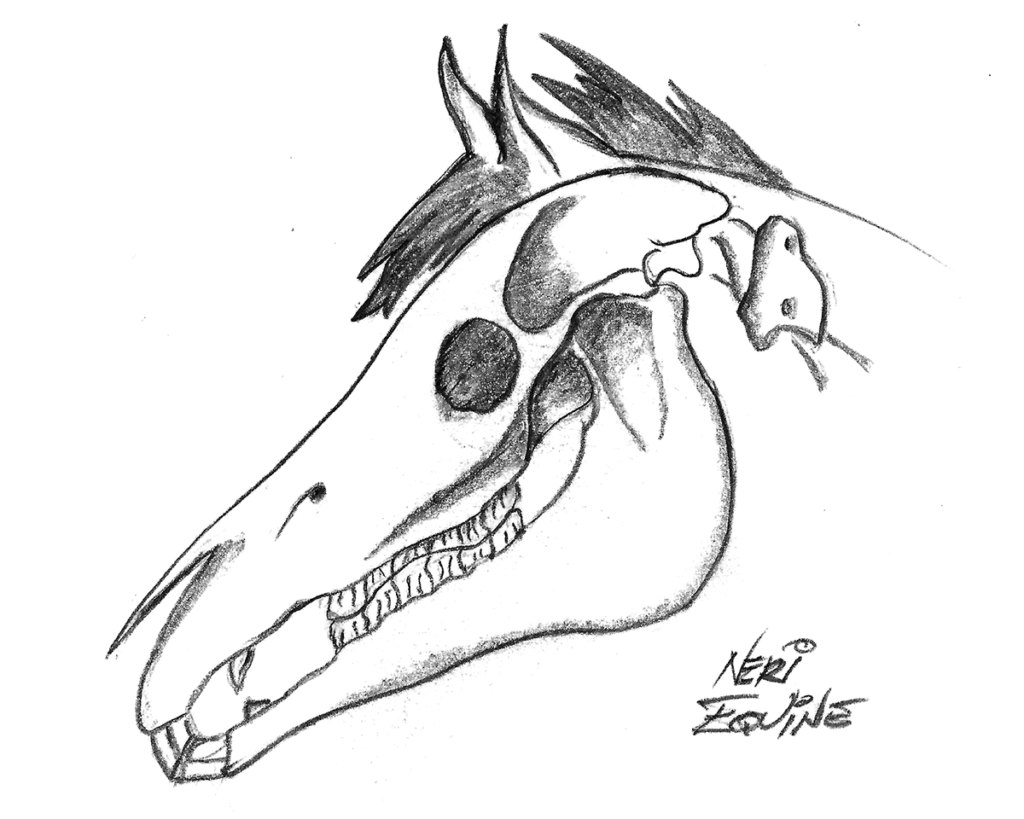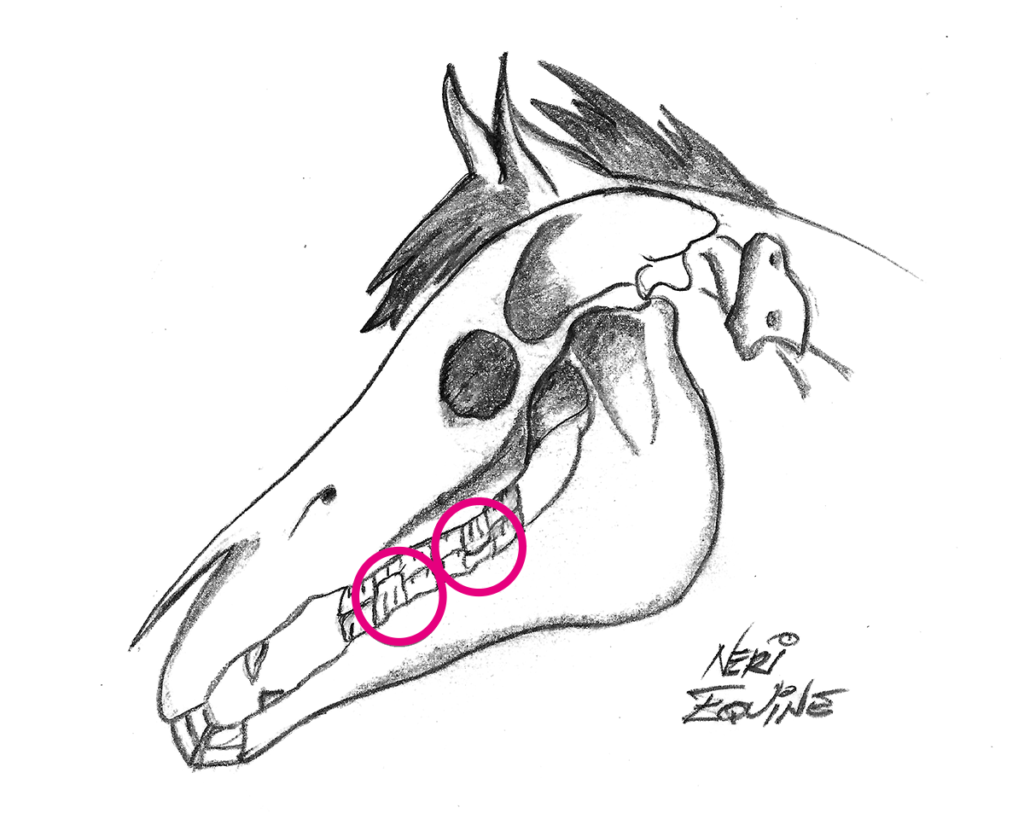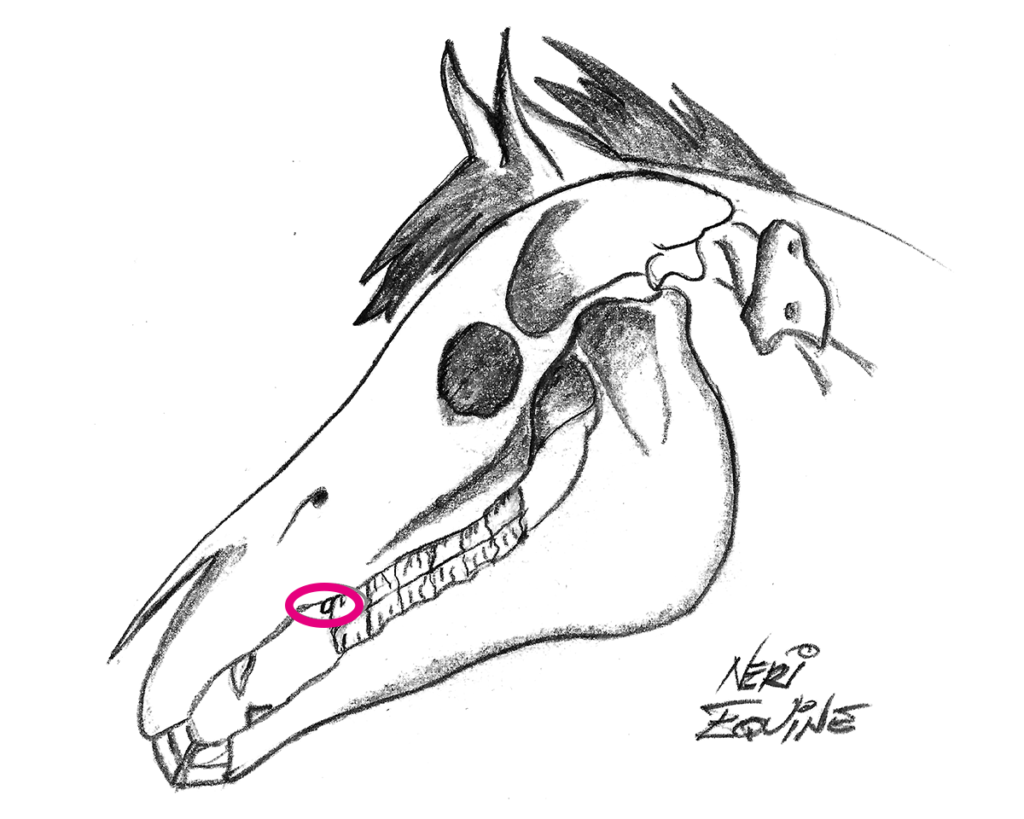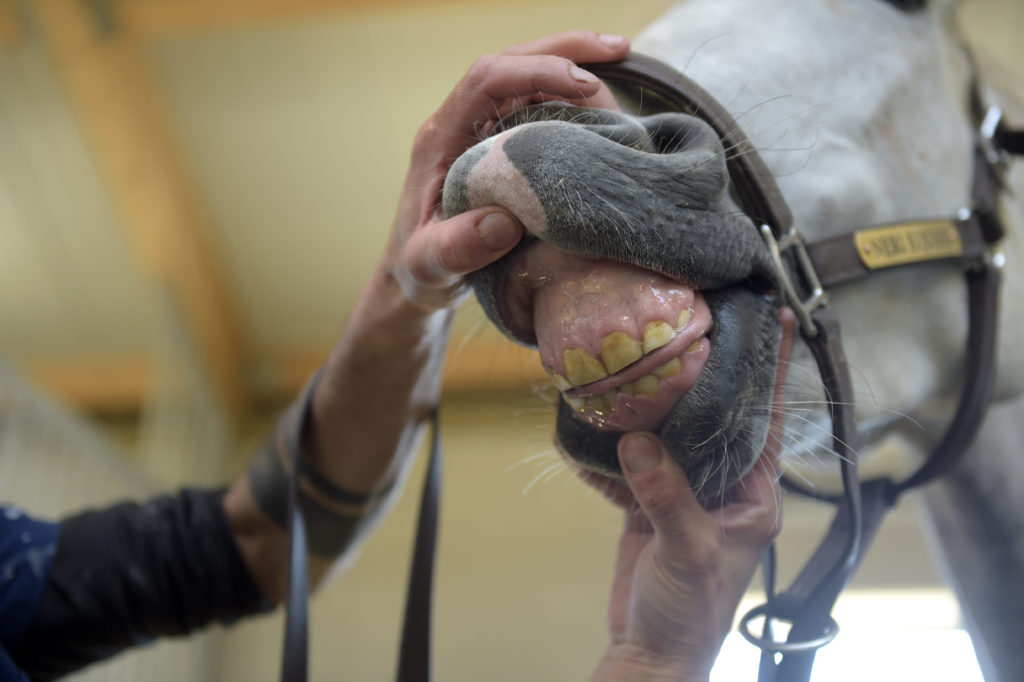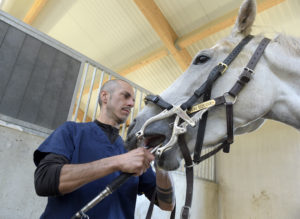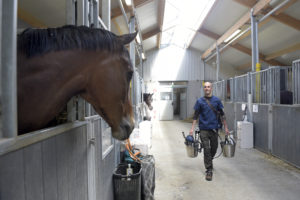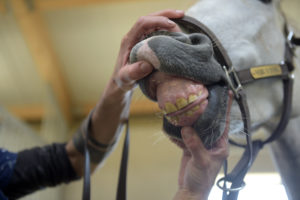Sharp enamel points
Sharp enamel points is the most common problem that I come across.. Almost all horses have sharp enamel points and they occur because a horse’s teeth continue to erupt and wear down from chewing throughout its life. The portions of the teeth that do not wear down create these sharp enamel points. These points can cause lacerations to the cheeks and tongue, leading to pain and discomfort when eating. Packing hay or feed into the cheeks and quidding are tell-tale signs of this issue. Regular dental care can help reduce these points, making your horse more comfortable.
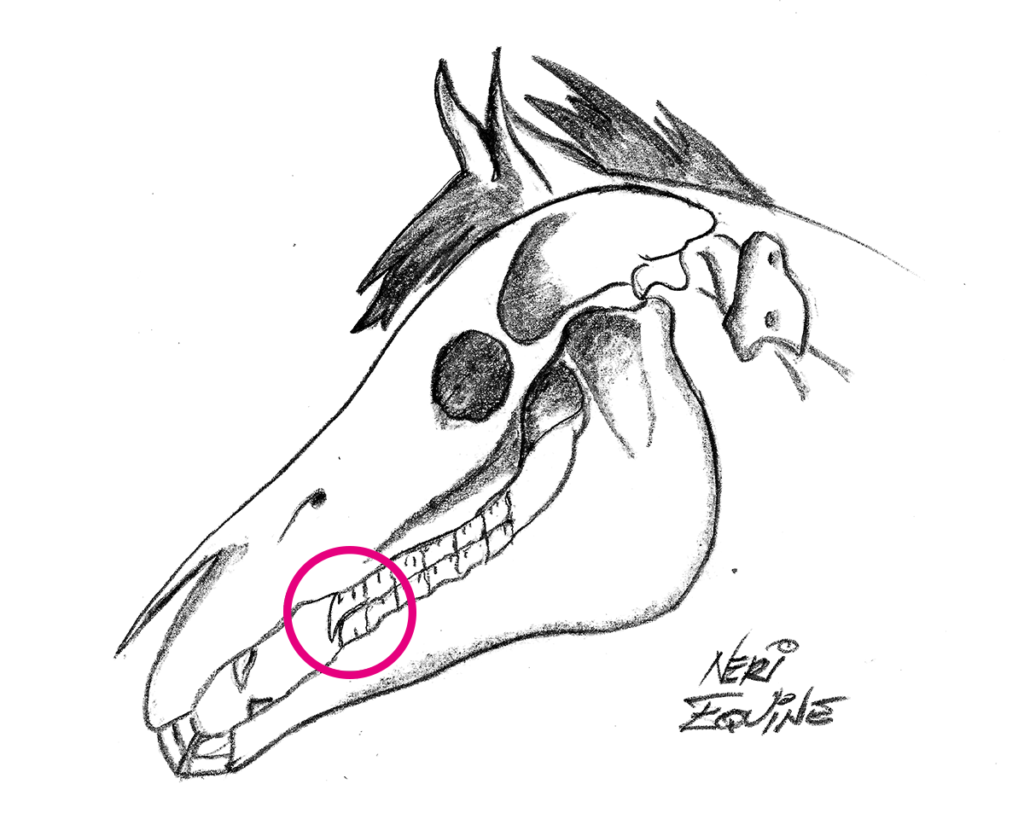
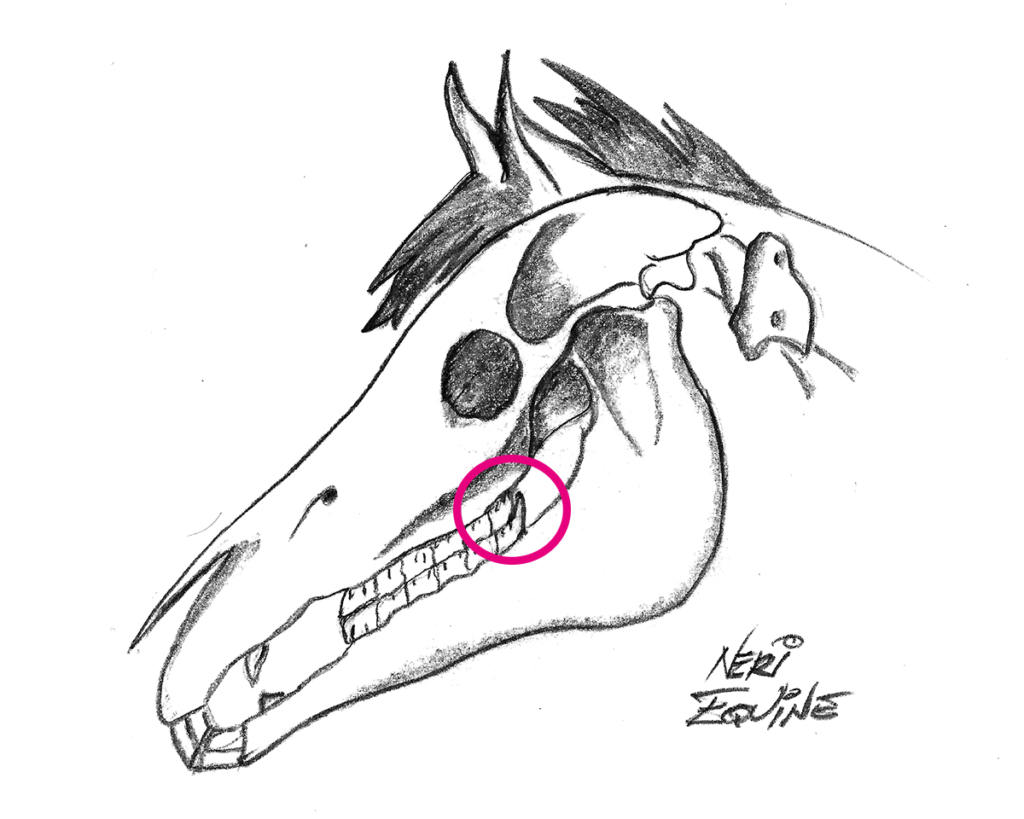
Wave mouth
Wave mouth is characterised by uneven wear of the molar arcades, creating a roller-coaster-like effect. This issue often results from neglected dental care in young horses, as retained caps or impacted molars can cause it. I’ve seen this issue affect many horses, and it can lead to difficulty chewing. Although it is challenging to fully correct wave mouth, especially in older horses, much can be done to make them more comfortable.
